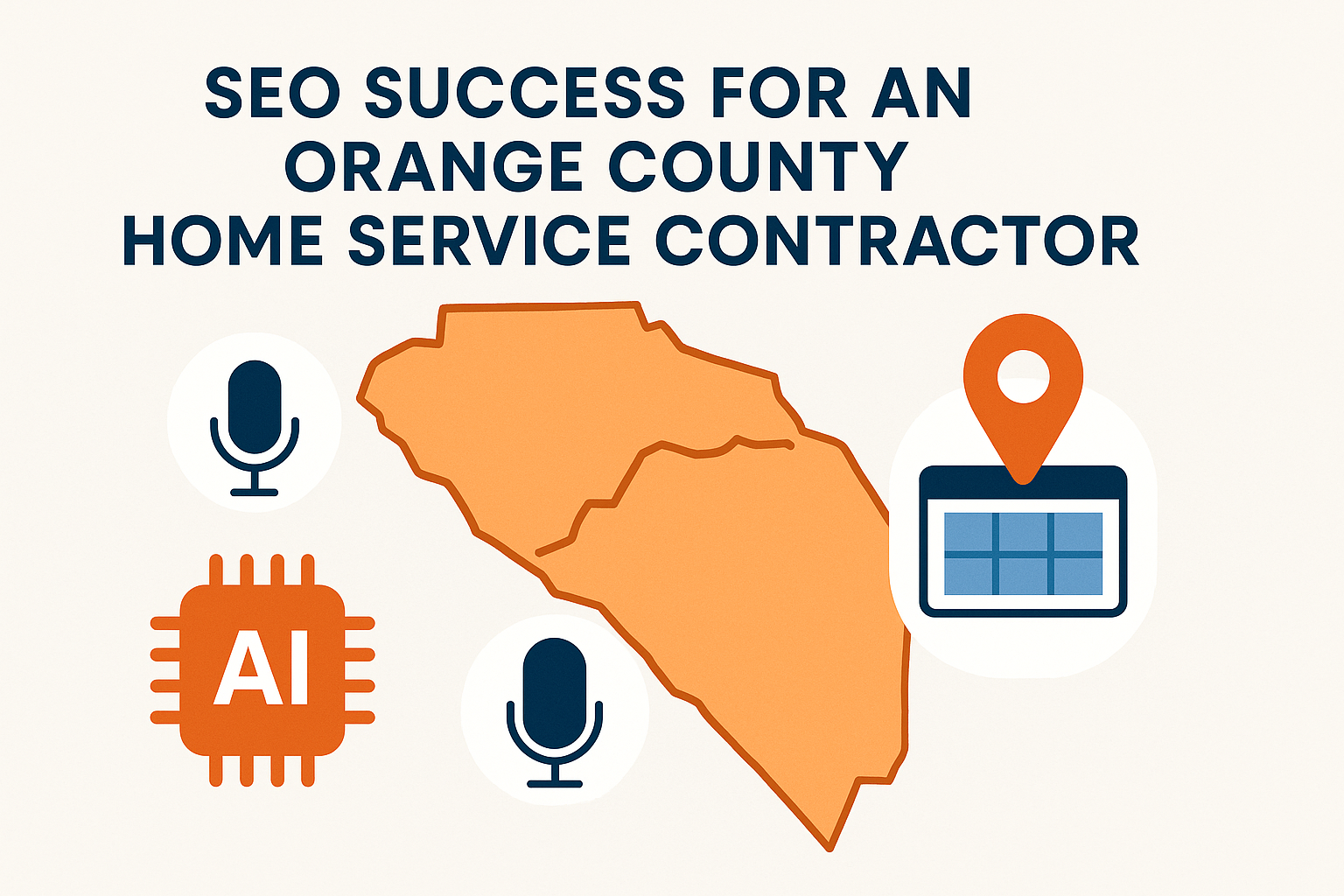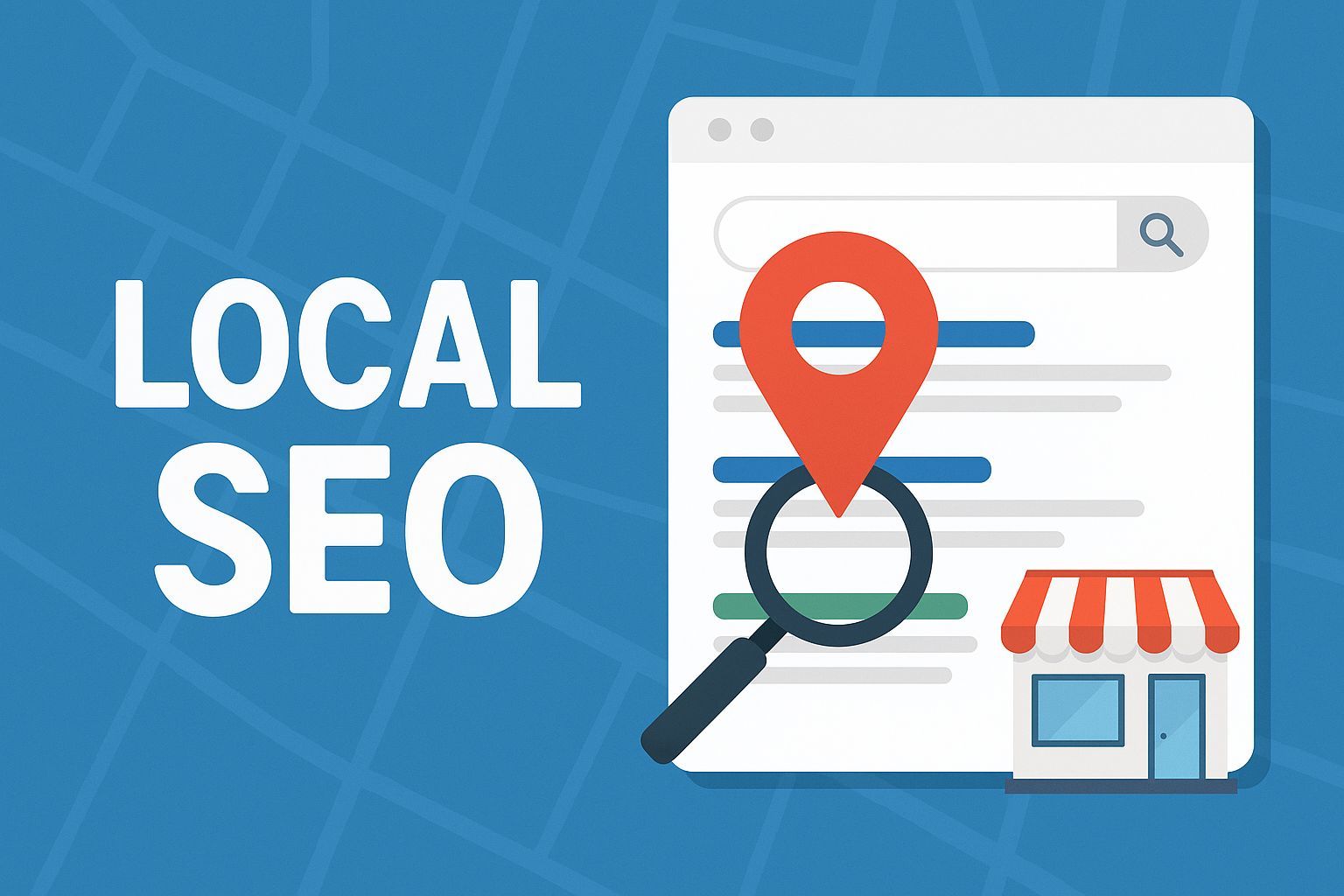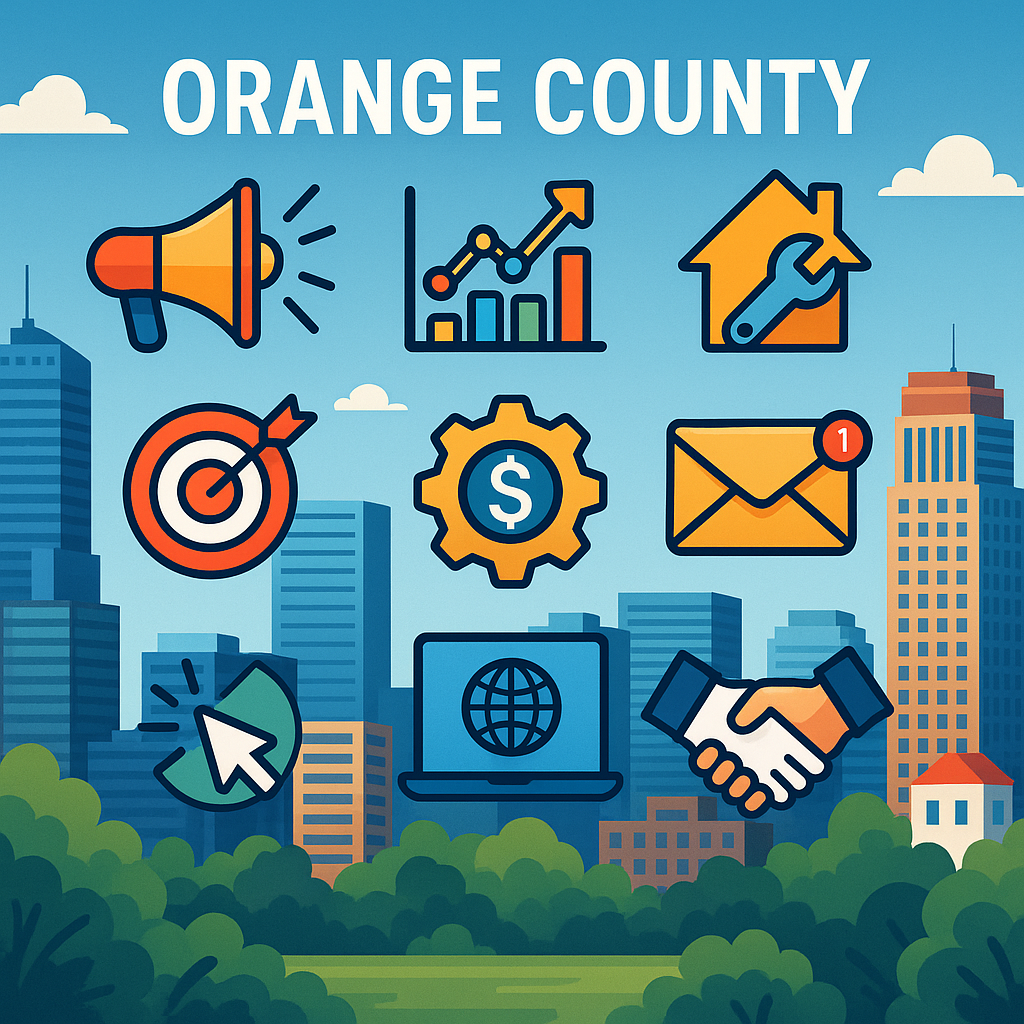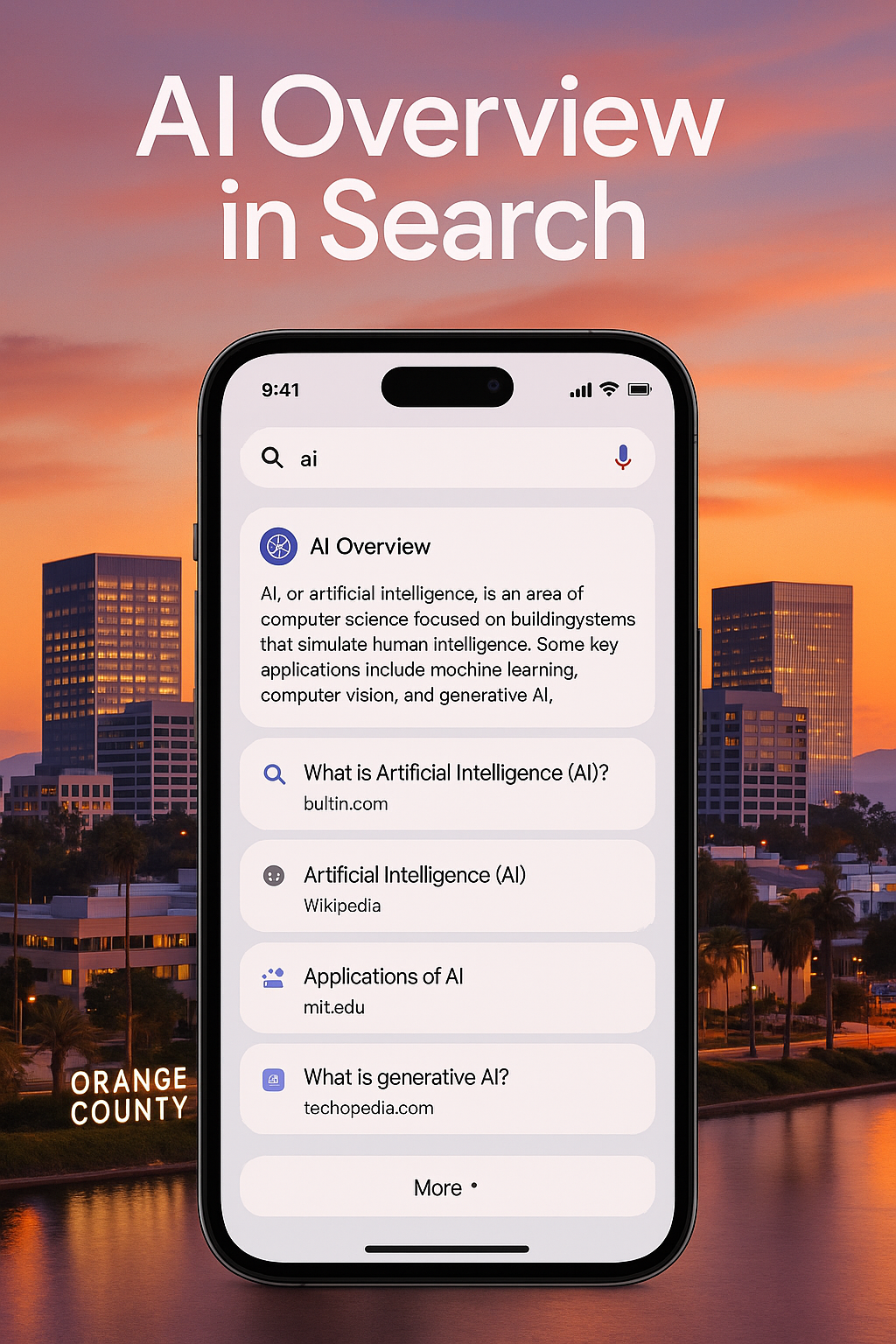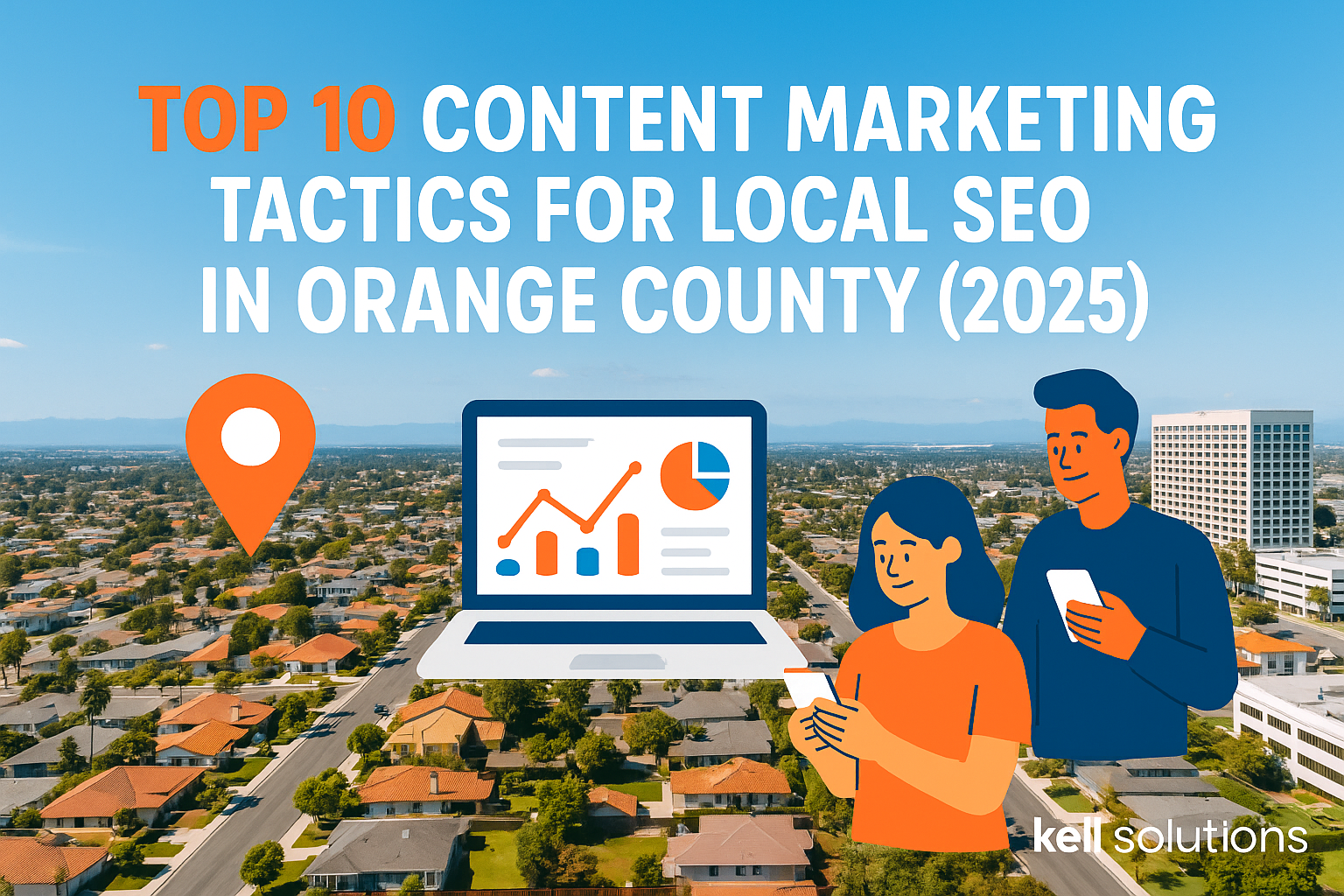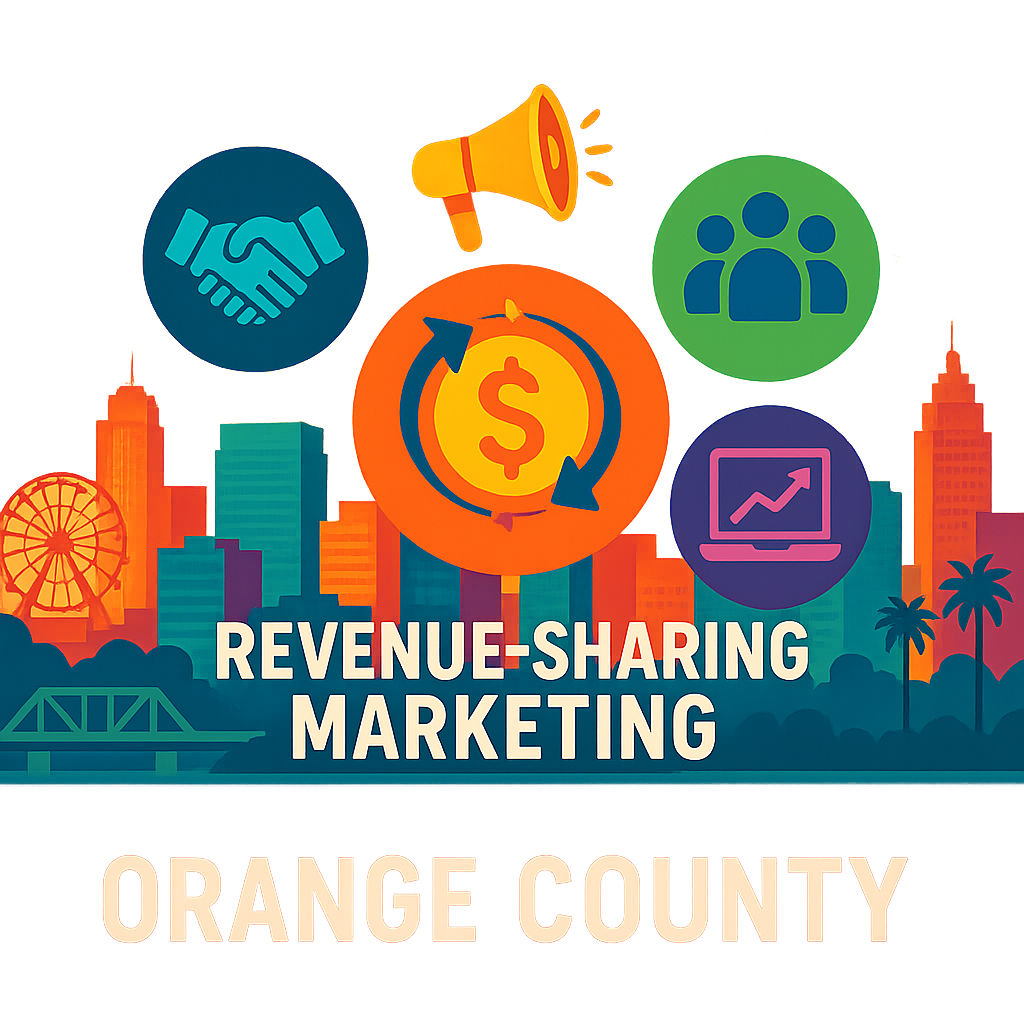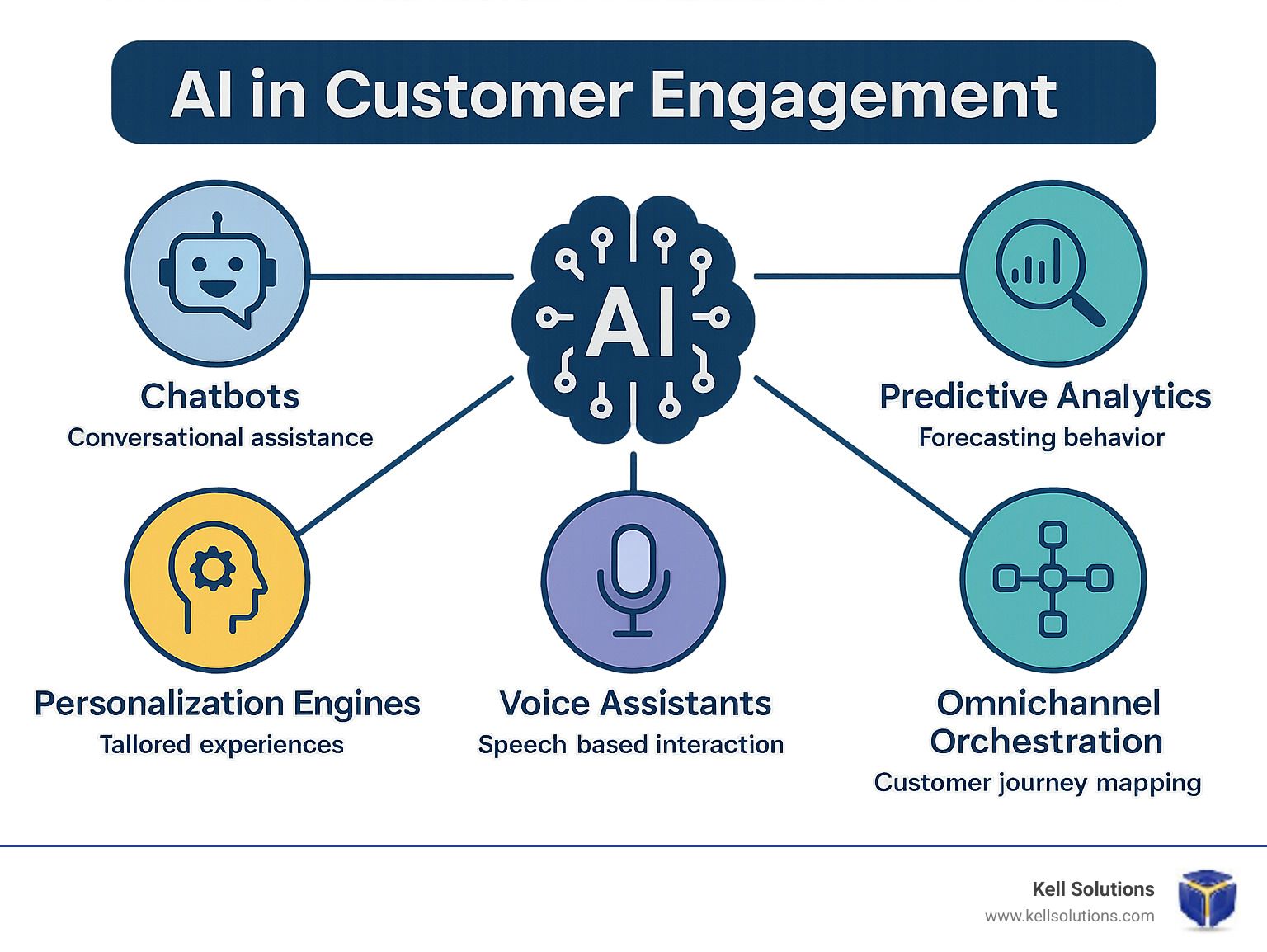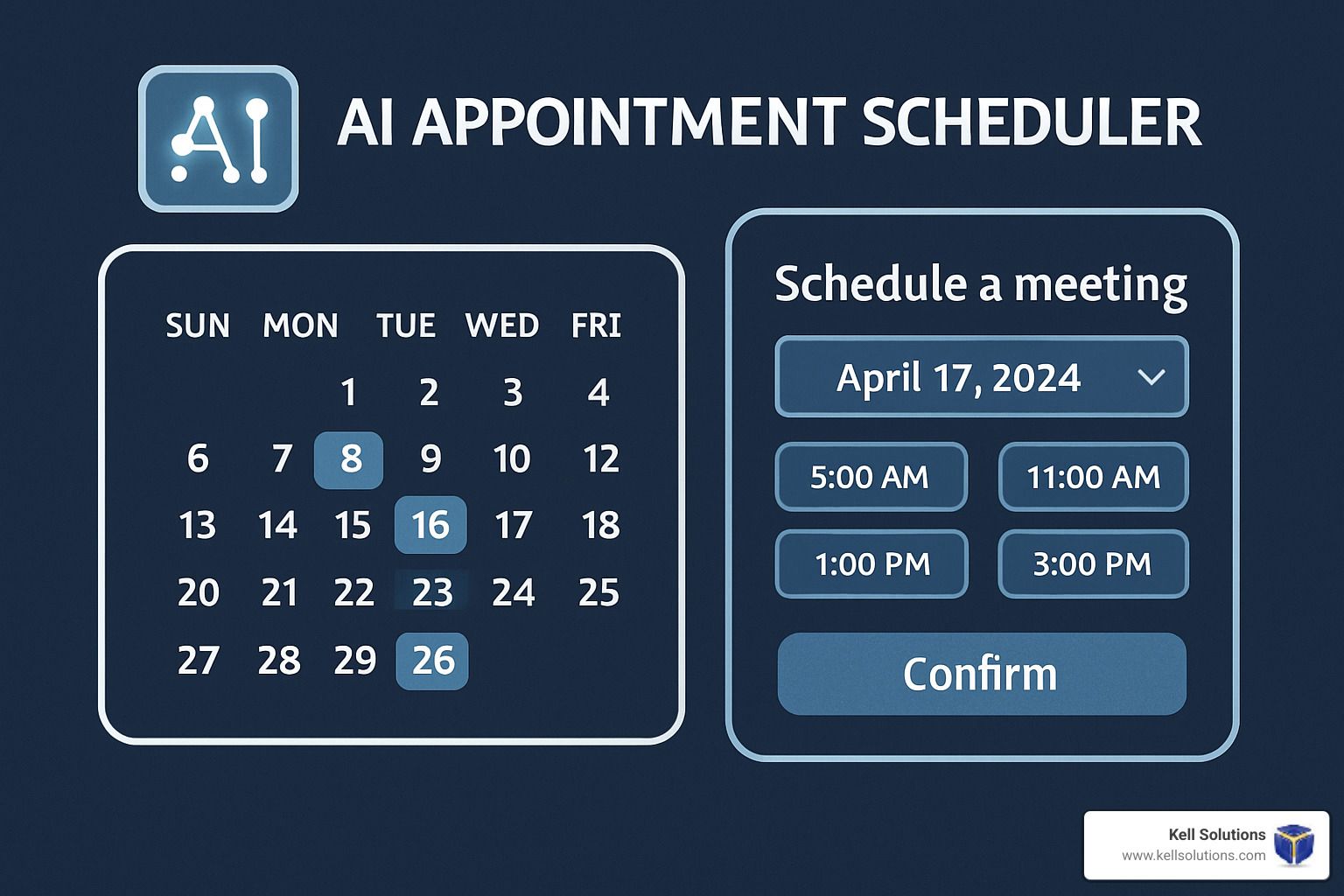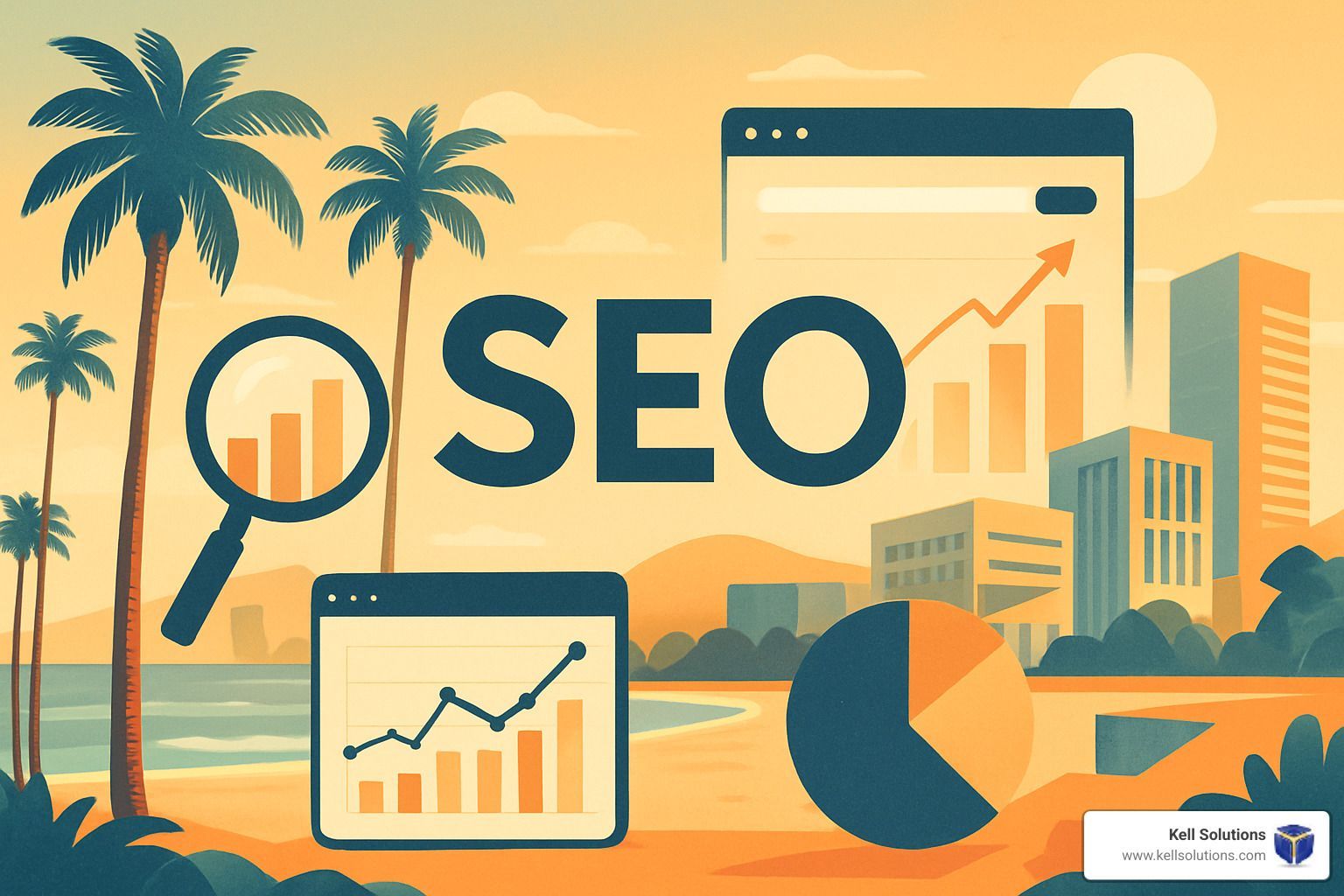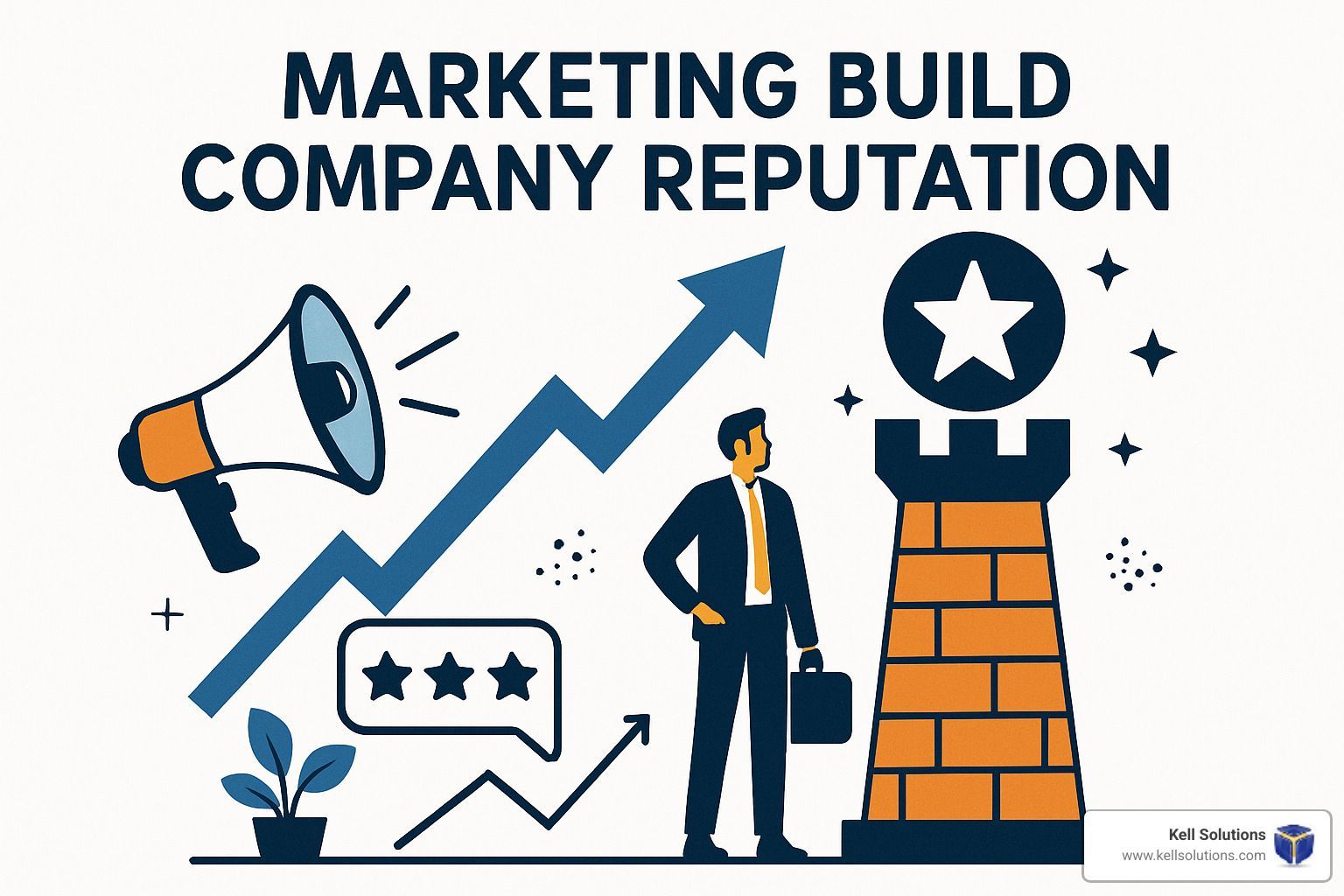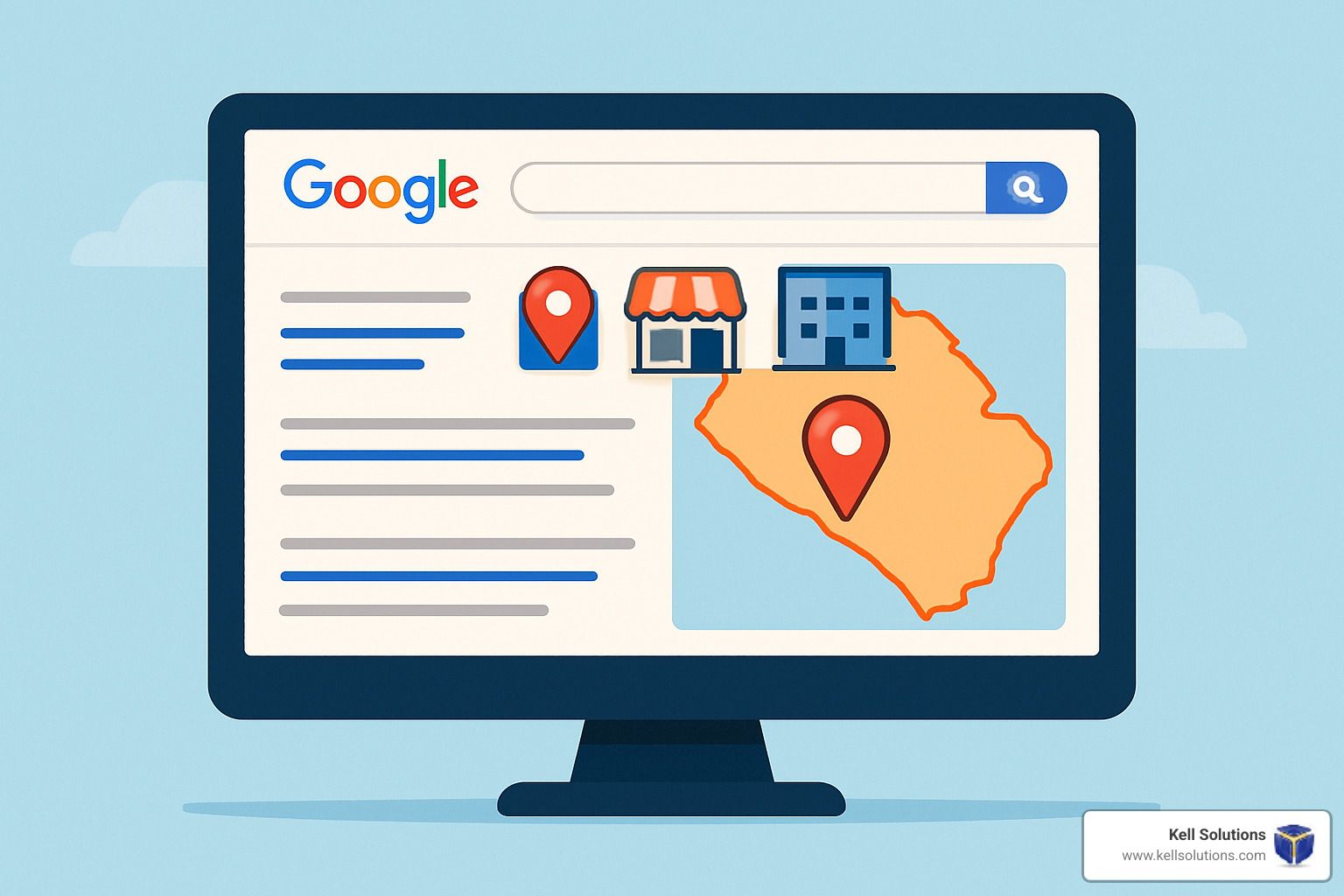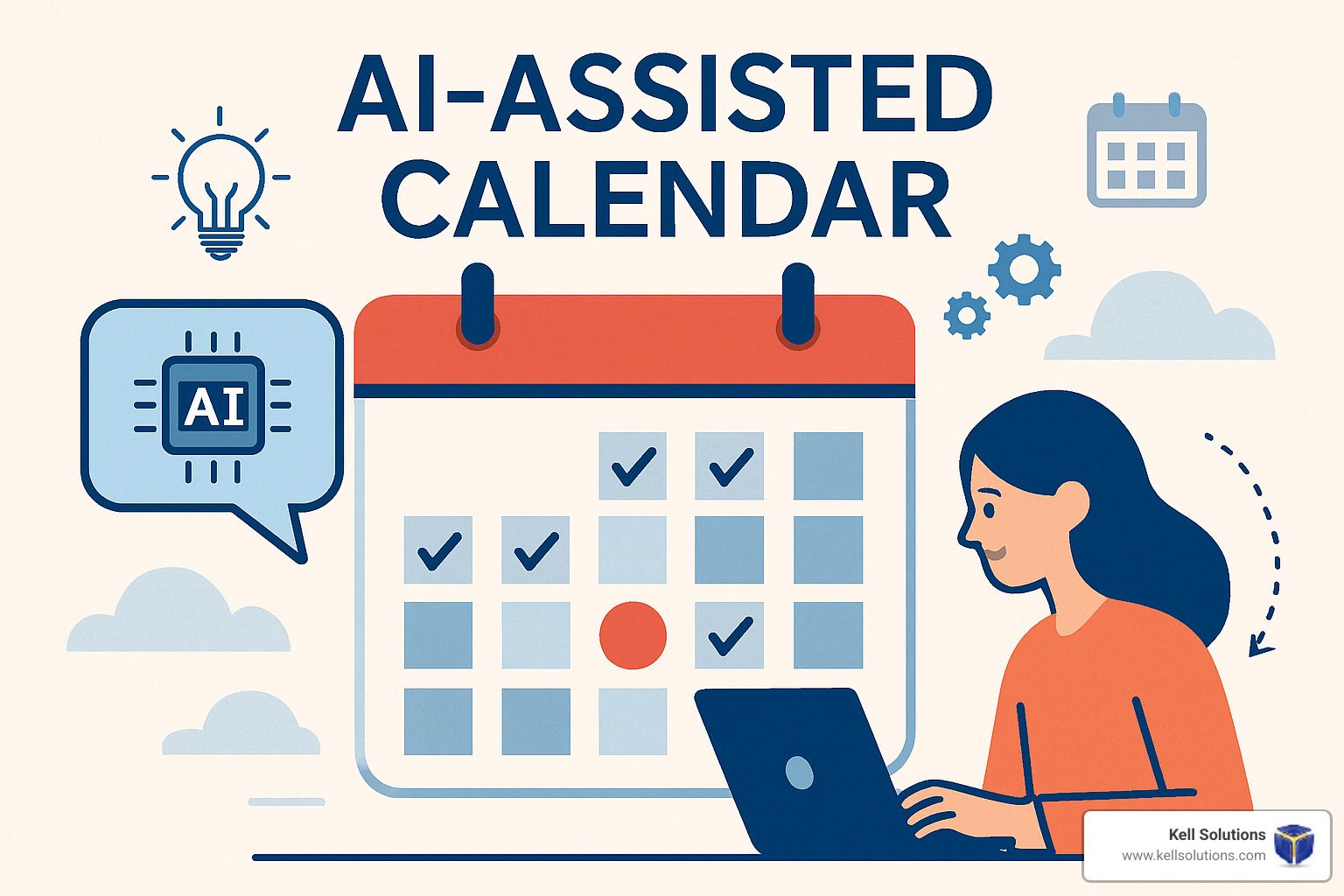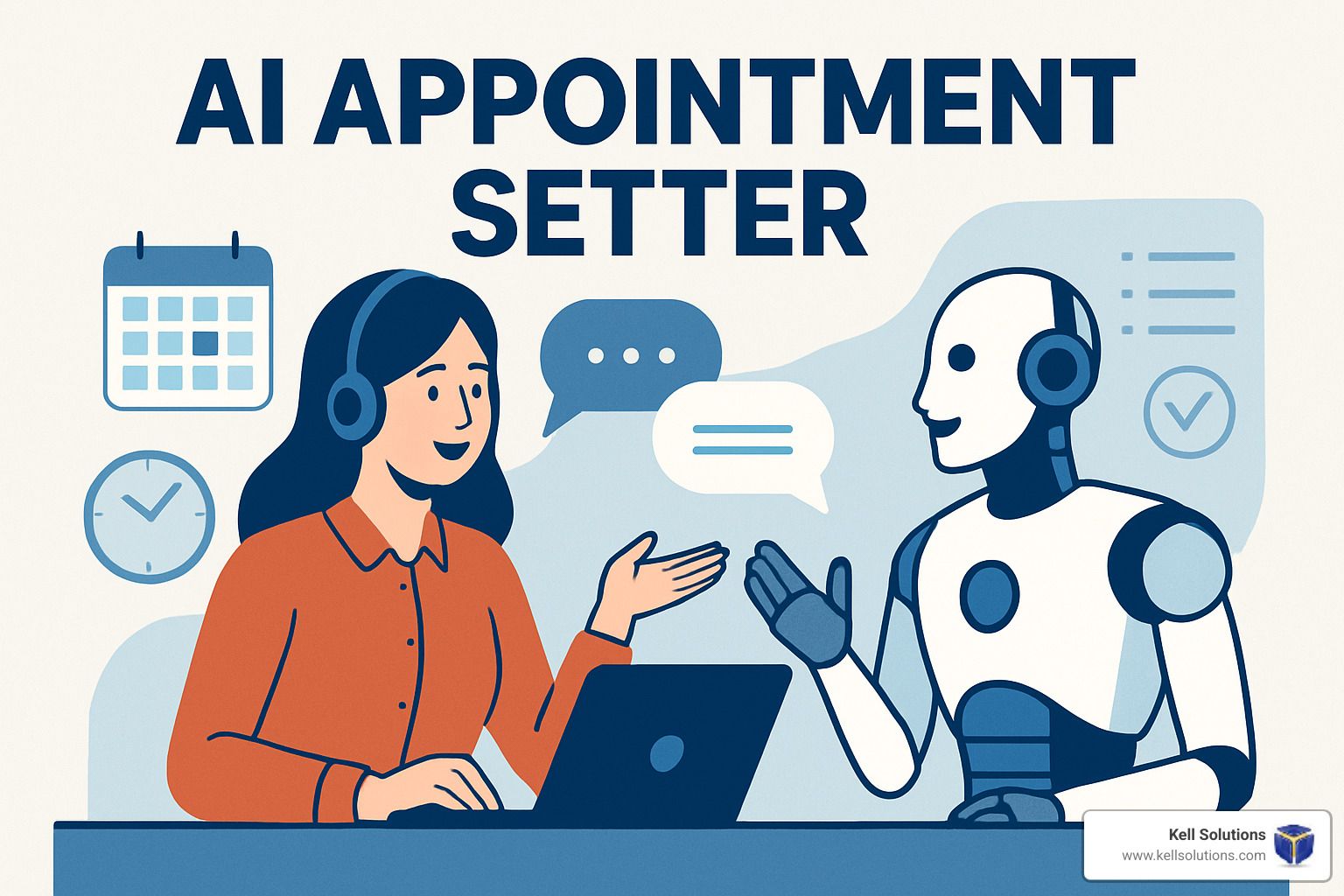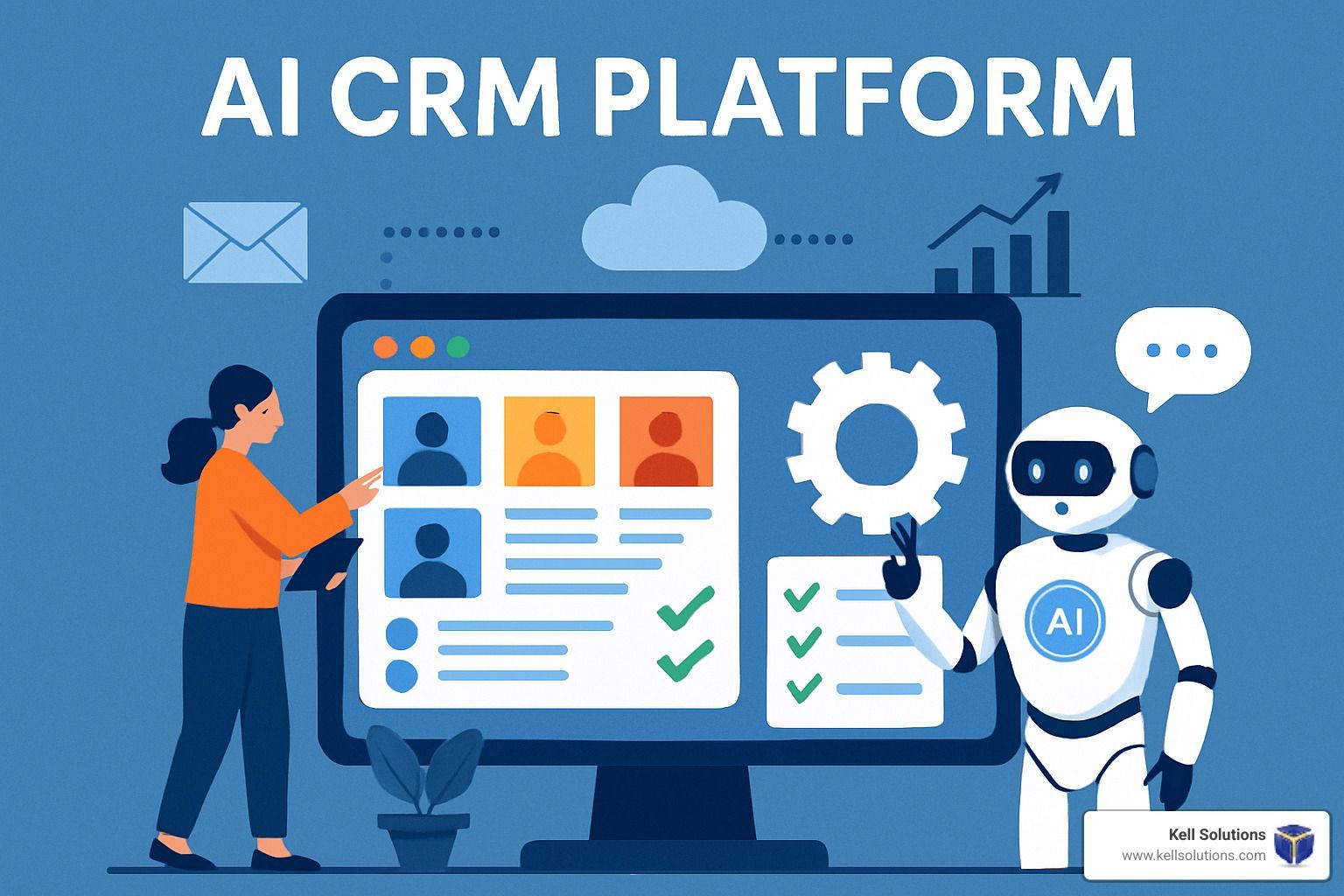Winning the Spotlight: Your AI Overviews SEO Strategy for 2025
How Small Businesses Can Thrive in Google’s AI-Driven Search Era

Google’s search results are changing before our eyes. If you’ve searched a question lately, you’ve likely seen an “AI Overview” box right at the top of the page. It’s a game-changer: Google now uses generative AI to answer queries directly on the results page, often before any traditional organic listings or ads. This rise of AI-generated answers is reshaping how customers find information – and it’s reshaping your SEO strategy in the process. In fact, Google’s new AI Overviews appeared in 13.14% of all U.S. desktop searches in March 2025, up from just 6.49% in January – a 102% surge in two months. Experts call it the biggest shift in search since featured snippets were introduced a decade ago.
For small business owners in home services and professional firms, the message is clear: adapt now or risk becoming invisible.
In this post, we’ll break down what Google’s AI Overviews (AIOs) are, how they’re affecting industries like yours, and – most importantly – how you can optimize your website to shine in this AI-driven search era. From structured content and clean FAQ schemas to leveraging authenticity (testimonials, real author bios) and niche content strategies, we’ll cover the AI Overviews SEO strategy you need for 2025. Let’s dive in and help you win back the spotlight on search!
What Are AI Overviews (AIOs) and How Do They Work?
Google AI Overviews (AIOs) are AI-generated snapshots of answers that appear at the top of the Search Engine Results Page (SERP). Instead of just showing a list of blue link results, Google’s AI scans its index (and other sources like Knowledge Graph) and writes a concise answer to the user’s query, pulling together information from multiple websites. It’s like a built-in ChatGPT on the Google results page. After a year of testing this feature as the “Search Generative Experience (SGE)” in 2023, Google rolled it out widely in May 2024. Now in 2025, AI Overviews are fully integrated into search for many queries.
An example of a Google AI Overview result at the top of the SERP. Google’s AI generates a brief answer (with sources cited below) so users can get key information at a glance.
How AIOs appear: Look for the sparkles ✨ icon and the label “AI Overview” at the top of the results. The AI Overview typically contains a few sentences answering the question, with links to source websites that support each point. Often, you’ll see 2-3 source links (e.g. a Wikipedia page, a niche blog, a news article) listed as clickable cards or dropdowns beneath the summary. If you click “Show more,” the AI may expand its answer with additional detail, again with citations. Essentially, Google is acting as an AI answer engine, digesting web content and presenting an immediate answer – very similar to how an assistant like ChatGPT might answer a question, but directly on the Google page.
A few key points about how AI Overviews function in search results:
- They prioritize quick answers: The AI Overview is designed to give searchers an instant answer or overview of the topic without needing to click a result. For example, a query like “What is a PR embargo?” might trigger an AI box defining the term and summarizing key facts.
- Sources are cited and clickable: Google doesn’t write answers out of thin air – it pulls from websites. Beneath the AI text, you’ll see source links. These could be authoritative sites or even niche blogs that have the relevant info. (Google has noted there’s no special markup needed to be included – it will algorithmically choose content to cite.)
- Not every query gets an AI Overview: Initially, AIOs show up mostly for informational searches. They are rarely triggered for very local “near me” queries or purely transactional searches (e.g. “buy HVAC filters online”). We’ll discuss this more below, but essentially Google uses AI when it thinks a quick explanatory answer would help the user. For sensitive topics like certain health or financial queries, Google is cautious – sometimes no AI summary is given due to quality concerns.
- They appear above all other results: Importantly, the AI Overview box often occupies the top of the page, pushing traditional organic listings further down (sometimes even below the fold on mobile). This prime placement is why SEO visibility is greatly affected – if your content isn’t part of that AI answer or visible right below it, you may lose traffic.
In short, AI Overviews are Google’s way of answering users’ questions for them, by compiling info from across the web into a single, easy-to-read summary. It’s convenient for users – but it raises the stakes for businesses trying to get noticed online.
The Impact of AI Overviews on Search Visibility (and Your Industry)
It’s hard to overstate how much AIOs are shaking up the SEO landscape. As mentioned, the prevalence of these AI answers is skyrocketing, now appearing on roughly 1 in 8 searches and climbing. Some studies even found that by early 2025, nearly one-third of searches by logged-out users showed an AI Overview prompt. Google is clearly all-in on generative AI in search, and that means your content strategy must account for a world where “zero-click” searches are common. Here are some key impacts and data points:
- Dramatically reduced organic clicks: Early evidence shows that AI Overviews can siphon off a lot of clicks that would normally go to the top organic results. Search marketing experts note that on some pages, the entire screen above the fold is taken up by ads and the AI Overview – pushing traditional results out of immediate view. If users get their answer from the AI box, they may never scroll further. Gartner analysts have even predicted that overall organic traffic from Google could drop by 25% because of AI answers, with some industries seeing even bigger declines. As Elisa Gabbert of WordStream puts it, “AI Overviews are going to reduce clicks to organic links even more dramatically than ad-heavy SERPs did.”
- Which queries are affected: The good news is that AI Overviews mostly appear for informational queries, not for everything. In fact, about 88% of AI Overview results are triggered by purely informational searches. Google is focusing this feature on questions where the user is looking for knowledge or an explanation. For transactional or local-intent searches (“find a plumber near me” or “order office supplies”), AIOs are infrequent – studies found only ~4% of transactional queries showed an AI Overview. For “commercial” research queries (like comparing products or services), AIOs show up about 19% of the time. And according to local SEO experts, location-based searches and service queries remain largely unaffected by AIOs for now. That means your Google Business Profile, local pack results, and service pages should still appear as usual when someone searches “electrician in [Your City]” or similar. The informational content on your site (blog posts, FAQs, guides) is what’s more likely to be impacted or utilized by the AI summaries.
- Industries seeing the biggest changes: Virtually all industries are touched by this change (since everyone has informational queries in their niche), but some are hit harder than others. Media and recipe sites, for example, have reported huge drops as Google just serves the answers (or list of ingredients) without a click. Professional services like legal and financial firms might see AI answers for general questions (e.g., “What is the penalty for X?”) that previously drove traffic to their blogs. Home services companies (contractors, HVAC, plumbing, etc.) may find that DIY and how-to queries are answered directly by Google’s AI, quoting sources like Home Depot or niche DIY blogs, which could steal traffic from their own how-to articles. On the flip side, AI Overviews can also surface content from niche sites that weren’t ranking before – one analysis found sources in AI answers that weren’t even in the top 100 organic results historically! This means if you produce highly relevant, specific content, there’s an opportunity to get featured by the AI even if your page wasn’t #1 in normal SEO. In fact, Google’s AI seems to prioritize niche expertise: smaller sites laser-focused on a topic can get picked up by the AI over broader sites. This is a huge opportunity for small businesses to punch above their weight in visibility by being the go-to expert in a specific sub-topic.
- Example – Home Services: Imagine a local plumbing company that has a blog article “How to fix a leaky faucet.” In the past, if that article ranked on page 1, a homeowner might click it. Now, Google’s AI might show a summary: “To fix a leaky faucet: 1) turn off the water, 2) disassemble the faucet to replace the O-ring, 3) reassemble and test…” – all in the AI Overview, with maybe a citation to the plumbing company’s blog as a source. The user gets the answer immediately. They might not click through unless they need more detail. However, if that plumbing company hadn’t written a good article, Google might have pulled from a competitor or a DIY forum instead. By having quality content, at least your brand could be one of the cited sources in the AI result, keeping you in the conversation.
- Example – Professional Services: Consider a small law firm. A potential client searches “Do I need a will or a trust?” Google’s AI might present a quick overview comparing wills and trusts, citing (for example) a legal blog, an estate planning site, and maybe the law firm’s own FAQ page if it’s well-structured. The user gets immediate insight. If your firm’s content was cited, that builds credibility (and they may click your link for more info or to contact you). If you had no relevant content, the AI will just feature others, and you’ve missed out on even being seen.
The bottom line: AI Overviews are creating a “zero-click” search environment for many queries, which can reduce traffic, especially for informational content. But they also open a door for those who adapt – by providing the concise, authoritative answers that the AI is likely to use. In the next section, we’ll explore exactly how to do that, so your website can appear in AI Overviews (rather than be sidelined by them).
How to Get Your Website Featured in AI Overviews (AIO)
So, how can a small business thrive in this AI-driven search era? The key is to make your content AI-friendly without sacrificing human readability. Google has said there’s no special tag or opt-in to be included in AI Overviews – the AI will pull from whatever content it deems most helpful. This means your task is to optimize your site’s SEO and content structure so that Google’s AI recognizes your content as high-quality, authoritative, and relevant for those overview answers. Many of these tactics align with good old-fashioned SEO best practices, but with an AI twist. Here are the core strategies for your 2025 AI Overviews SEO strategy:
1. Use Structured Content and Clean FAQ Schema
Structure is king when it comes to being AI-friendly. Google’s AI is effectively skimming and parsing your page for concise facts or answers, so the easier you make it to parse, the better. Two big components here are using clear content structure and adding schema markup:
- Format content with clear headings & sections: Break up your content into logical sections with descriptive headings (H2s, H3s, etc.). Use bullet points or numbered steps for how-tos. This not only helps readers but also helps the AI identify distinct pieces of information. Google’s AI relies on content that flows naturally, with distinct headings, subheadings, and simple lists that offer concise information. A well-organized page (think of a scannable outline) is more likely to have a snippet grabbed for the AI summary than a wall of text. In fact, some AI Overview citations will deep-link directly to a specific subheading or paragraph on your page (using a text fragment anchor) that contains the answer. Make every section of your content count as a standalone Q&A if possible.
- Implement FAQ sections with proper schema: Adding an FAQ section on key pages (or dedicated FAQ pages) is a smart move in the AI era. Not only do FAQ pages often rank for long-tail queries, but they are perfect fodder for AI Overviews because they present Q&A in a tidy format. FAQ sections are now even more valuable – by addressing common questions in clear, bite-sized answers, you significantly improve the chances of your content being highlighted in AI summaries. Mark up your FAQ content with FAQ Page schema (structured data) so Google clearly understands the question-answer pairs. This schema doesn’t guarantee inclusion in an AI Overview, but it acts like a roadmap for search engines, making it easier for the AI to find and extract the relevant info. Tip: Keep each FAQ answer brief (1-3 sentences) and factual, as if you’re directly answering the user – the AI loves concise, authoritative answers.
- Leverage How-To schema and other structured data: Similarly, if your site offers step-by-step guides, use How to schema. If you have product pages with reviews, use Review schema. Structured data provides an extra layer of context to your content, which facilitates AI’s ability to extract information for summaries. For example, a “how to unclog a drain” article with clear step headings and How to markup might be easily converted into an AI step-by-step answer. While schema markup’s primary benefit is rich snippets in traditional SERPs, it can indirectly help with AIO by clarifying the content’s meaning to Google’s algorithms.
In essence, think like a librarian organizing a book: label each chapter and section clearly, and summarize key points in Q&A format when possible. A structured, schema-marked page is far more likely to be understood and utilized by Google’s AI than a loosely organized one.
2. Target Conversational, Long-Tail Queries (Write Naturally!)
With AI Overviews, Google is addressing users’ natural language questions. Many people now type or speak queries in full sentences (“How can I improve indoor air quality in my home?”) rather than just staccato keywords (“improve indoor air quality”). Your content strategy should embrace these conversational queries:
- Research and use long-tail keywords: Long-tail, question-style keywords have always been great for SEO, and now they’re crucial. AI Overviews are often triggered by complex or specific questions, so focus on niche questions that relate to your business. For example, a general contractor might target a query like “Why do my hardwood floors buckle in summer?” or a tax consultant might target “Can LLC expenses be written off?” These are specific conversational searches. Use tools (Google’s “People Also Ask”, keyword research tools, etc.) to find such questions. Optimize your content around them by asking the question in your heading and answering it directly in the text. This mirrors the Q&A style that AI Overviews deliver.
- Write in a natural, conversational tone: Don’t be afraid to sound human in your writing. In fact, to increase the chance of being picked up by an answer engine (Google’s AI or even something like ChatGPT browsing), you want your content to read like one person explaining to another. That means using the same language your customers use when they ask a question. If people say, “how do I fix…”, use that phrasing in your content. Avoid overly technical jargon unless your audience uses it. Google’s algorithms (and AI) are getting better at understanding natural language and context. Content that directly addresses the user (“you”) and their question is more likely to be deemed relevant. Think about voice search as well – many conversational queries come through voice assistants, which then might invoke an AI answer.
- Use conversational query targeting in headings: A practical tip is to use questions as headings. For example, an H2 saying “How Do AI Overviews Affect Small Businesses?” (just like we’ve done in this blog!) immediately signals to Google that the text below answers that question. If you then proceed to answer succinctly, that chunk is primed for an AI snippet. This technique not only helps AIO inclusion but also improves traditional SEO (people often click on results that exactly match their question) and readability.
- Address related follow-up questions (People Also Ask): Google often shows a People Also Ask (PAA) box on results with AI Overviews – in fact, PAA appears on 99.7% of SERPs with AI results. This means users might click those related questions too. Include those related questions in your content if they make sense, perhaps as part of an FAQ or a “related questions” section. If your page answers multiple closely related questions, you increase the odds of capturing more AI snippets or at least ranking for those variations.
In short, write content that directly answers the kind of detailed questions your customers ask. By targeting these long-tail queries and using a friendly, Q&A style, you’ll align your site with the queries most likely to trigger AI Overviews and satisfy users who find your content via AI or traditional search.
3. Demonstrate Authenticity with E-E-A-T (Experience, Expertise, Authoritativeness, Trustworthiness)
In the age of AI-generated everything, authenticity and credibility stand out more than ever. Google’s Search Quality Rater Guidelines have been updated to emphasize E-E-A-T – which now stands for Experience, Expertise, Authoritativeness, and Trustworthiness. In practical terms, if you want Google’s systems (and by extension its AI) to favor your content, you need to show that you and your site are a trustworthy authority in your field. Here’s how:
- Show real experience and expertise: Whenever possible, infuse your content with first-hand experience. If you’re a home inspector writing about “identifying foundation issues,” mention your credentials or years of experience, and share brief anecdotes or observations (“In my 200+ home inspections, I often see hairline cracks like… which typically mean…”). Google added “Experience” as a quality factor to reward content that shows the creator has lived or done what they’re writing about. This kind of detail not only builds trust with readers, but an AI parsing your page may detect those signals of expertise (like specific terminology used correctly, mention of numbers or case studies) as a sign of authoritative content.
- Use real authors and detailed author bios: No more anonymous blog posts! Google’s documentation strongly encourages adding accurate authorship information (bylines) to content where readers expect it. Make sure each blog post or article on your site credits a real author (with name and preferably a brief bio). The bio should highlight why that person is qualified – their title, experience, certifications, etc. For example, if Jane Doe, CPA on your team writes a tax tip article, her bio might say “Jane Doe is a Certified Public Accountant with 15 years of experience in small business taxation.” This isn’t just fluff; it feeds Google’s assessment of E-E-A-T. Over time, if that author’s name appears across authoritative sites or is searched for, it could even become an entity that Google associates with expertise. Authenticity matters: having a human face (and name) on content also differentiates it from generic AI-generated text. It signals to quality raters and algorithms that you stand behind your content.
- Incorporate testimonials, reviews, and case studies: One powerful way to boost Trustworthiness is to include testimonials and client reviews on your site. For example, a professional services firm might include client quotes (“XYZ Law Firm helped me settle my case quickly... – John Smith, client”). A home contractor might show a short testimonial in a project case study. These act as real-world proof that you deliver on what you say. They also add unique content (each testimonial is different) that an AI might actually pick up on – possibly not for the overview itself, but for evaluating your page’s credibility. Additionally, if you can mark up testimonials with review schema (if appropriate, e.g., a star rating), that’s even better. At Kell Web Solutions, we practice what we call “structured writing with integrated testimonials” – meaning we design pages to include relevant client quotes or social proof in-line with factual content. This way, when someone (or Google’s AI) reads the page, they see authoritative info backed by real people’s voices. It creates a rich, trustworthy experience. While the AI might not cite a testimonial in its answer, the overall E-E-A-T boost can make your content more likely to be chosen.
- Cite credible sources and data: If you mention facts or stats (like we’re doing in this blog), cite your sources. Linking out to authoritative sources (news outlets, industry research, .gov or .edu sites, etc.) where appropriate can help signals of accuracy. Google’s AI evaluates content for relevance, accuracy, and engagement, rewarding high-quality, original content that provides clear answers. If part of providing accurate info means referencing a study or guideline, do it. It shows you did your homework and aren’t just stating unverified claims. Avoid unsubstantiated claims – in fact, Google has warned against AI-generated content without proper citations as it can fall under “poor quality” content. So, if you use any AI tools to help write, double-check and cite factual info properly.
- Be transparent and thorough: Include an About Us page detailing your business and team credentials. Make your contact information easy to find. If you’re a member of professional associations or have awards, mention them. All these little things contribute to your site’s authority and trust. Quality raters are instructed to look for signs that content comes from a reputable source, especially for “Your Money or Your Life” topics (health, finance, legal) where trust is critical. It may seem tangential to SEO, but these factors can indirectly influence whether your content gets the nod to appear in an AI Overview or whether Google bypasses it for someone else’s.
Remember, Google’s AI isn’t magically all-knowing – it leans on signals of credibility. By doubling down on E-E-A-T and authenticity, you make it more likely that your content is the one the AI chooses to summarize. As the Advanced Web Ranking team put it, aligning with E-E-A-T standards (experience, expertise, authority, trust) and incorporating expert opinions and quality info makes your site more appealing to AI Overviews. In other words, be the expert that the AI would be proud to quote!
4. Create Niche, Authoritative Content (Go Deep on Your Specialty)
One trend we’re seeing is that Google’s AI Overviews often highlight niche sites or very specific pages that thoroughly answer a question, even if those sites aren’t megabrands. For small businesses, this is an invitation to own your niche online.
Here’s how to leverage niche-specific content targeting:
- Focus on your unique expertise: As a small business, you likely have a specific set of services or expertise. Use that to your advantage by creating content that dives deep into topics that broader sites might only skim. For example, a family law attorney could build a library of content around niche questions on divorce, custody, etc., that big legal sites don’t cover in detail. A pest control company could publish guides on region-specific pest issues (“Termite season in Orange County: What to expect”). By being the most thorough source on a very specific query, you increase your chances of being the one the AI picks as a source. Google’s AI “prioritizes niche sites” and is shifting focus to niche-specific content, likely because these tend to have the most directly relevant answers for niche questions.
- Use a “topic cluster” strategy: This is an SEO approach where you create a pillar page on a broad topic and multiple in-depth pages on subtopics, all interlinked. This not only helps organic SEO (establishes your site as an authority on the topic cluster) but also gives the AI multiple relevant pieces to potentially pull from. If you have a main page about, say, “Estate Planning 101” and several sub-pages (“setting up a trust,” “power of attorney explained,” “living will vs. last will”), Google sees a breadth and depth of content on your site about estate planning. When an AI Overview is generated for a related query, it might draw from one of your specific subtopic pages and recognize your site’s overall authority on the subject. Internally linking these pages with clear anchor text (and having a good site structure) is key for signaling this topical authority.
- Keep content up-to-date and relevant to your locale or audience: Don’t let your niche pages stagnate. Regularly update them with new insights, especially if there are yearly changes (e.g., tax laws updates, new trends, seasonal tips). Freshness can be a factor – Google likes up-to-date info for its summaries. Also consider localizing content when relevant. For instance, a dentist could write “What causes tooth pain?” generally but also have a post “Top 5 causes of tooth pain in [Your City]” if there are local factors (water mineral content, etc.). Niche doesn’t only mean topic; it can mean audience niche. Aiming content at a specific demographic or region can set you apart as the authority for that segment.
- Leverage Smart Keyword Top-Up (long-tail keyword expansion): At Kell Web Solutions, one of our secret weapons for niche content is our Smart Keyword Top-Up tool. This proprietary strategy uses AI and performance data to find long-tail and niche keywords with precision, ensuring we cover the less obvious queries our clients’ audiences are searching for. It’s similar to how some advanced SEO platforms suggest related subtopics – essentially, we “top up” our content plans with these smart keywords to leave no question unanswered. This helps agencies and businesses optimize content for the latest AI search trends. By targeting those ultra-specific phrases, we help our clients become the go-to source, increasing their chances of appearing in an AI Overview for those topics. (Think of it as finding the questions people will ask tomorrow and answering them today.)
In summary, don’t try to out-Amazon Amazon or out-Wikipedia Wikipedia on broad topics. You’ll win by narrowing your focus and being the best at answering the specific questions that matter in your niche. Not only will this be likely to improve your normal SEO rankings (since relevance is high), it also positions you as a prime candidate for AI-generated answers. Google’s own AI systems are looking for content that directly addresses user queries and provides value – by specializing and going deep, you’re doing exactly that.
5. Optimize User Experience and Technical SEO (Foundation Matters)
This last strategy is more about the indirect factors, but it’s worth mentioning: the sites that perform well in AI Overviews tend to already follow solid SEO fundamentals. Page experience, speed, and overall site health might not directly put you into an AI box, but they make it more likely your content gets surfaced at all. A few quick reminders:
- Ensure fast, mobile-friendly pages: Google’s AI is an extension of Search. If your site is slow or not mobile-optimized, it may rank lower and thus be less likely to be considered for an overview. Core Web Vitals, mobile usability, and general on-page SEO best practices still apply.
- Build authoritative backlinks in your niche: Backlinks from other reputable sites can boost your authority. While an AI Overview might pull from a site with zero backlinks (if the content is unique enough), having backlinks certainly doesn’t hurt and usually correlates with better search presence overall. Local businesses can earn links through local news features, partnerships, etc.
- Engage users (low bounce rate, good time on site): If users that do click your site tend to stay and engage, that user engagement signal can indirectly indicate your content is high quality. Google wants to feed its AI with content that users find valuable. So, focus on readability, design, and providing value to the reader. Format content with images, use clean typography, and avoid pop-ups or anything that frustrates users.
Think of this as building a solid SEO foundation – authoritative backlinks, quality content, and good UX give you an edge, as sites that perform well in organic search tend to have an advantage for AI visibility too. You might need to make some additional tweaks (as we listed in points 1-4) to specifically target the AI Overview opportunities, but you won’t get far if the underlying site is shaky.
SEO Tip of the Week: Add a “FAQ of the Month” section to your blog or newsletter. Pick one fresh question that your customers have asked recently, answer it in 2-3 paragraphs, and include FAQ Page schema.
Regularly adding new FAQs keeps your content updated and relevant, which can boost your chances of getting featured in AI Overviews. Plus, you’re directly addressing your audience’s current curiosities – a win-win for engagement!
The Kell Web Solutions Edge: Smart Strategies for the AI Era
At Kell Web Solutions, we’ve been proactively adapting to this new AI-centric SEO landscape. Our goal is to help small businesses not just survive the changes but thrive and outshine larger competitors. Here are a couple of ways we give our clients an edge:
- Smart Keyword Top-Up: Mentioned earlier, this is our proprietary approach to keyword research in the AI era. Instead of just the usual keyword list, we use AI-driven tools and our own analysis to find the hidden gem queries that your competitors might overlook. These often include conversational questions, long-tail keywords, and semantically related terms that enrich your content. By “topping up” your pages with these extra keywords in a natural way, we ensure your content covers topics comprehensively. This strategy helps small, niche pages rank for a variety of related queries and signals to Google that you have breadth and depth in your subject area. As AI Overviews evolve, targeting a broad set of closely related terms can make your page a more obvious candidate for inclusion (since the AI loves comprehensive answers). Our Smart Keyword Top-Up feature helps target long-tail and niche keywords with precision, keeping your content aligned with the latest search trends.
- Structured Writing with Integrated Testimonials: Content should inform and build trust. We coach our clients on writing content that is both structured for SEO/AIO and persuasive for real users. One unique tactic is integrating testimonials or expert quotes into the content flow (not just dumping them in a sidebar). For instance, in a page about “Top 5 Bathroom Remodeling Tips,” we might include a brief quote from a past client about their successful remodel experience, or a line from the company founder about why a certain tip matters. This gives the content a human element and authenticity. It also provides micro-content that might get picked up elsewhere (Google could even highlight it as a featured snippet for a query like “what do customers say about bathroom remodels” – you never know!). The structured writing part means we ensure every page has a logical layout, with a clear introduction, well-defined sections (often question-based, as discussed), and a concise summary or conclusion. Think of it as applying journalistic rigor to a blog post – it results in content that’s both high-quality for readers and easily digestible by AI algorithms.
- Continuous E-E-A-T Audits: We keep a close eye on the latest Google Quality Rater Guidelines and algorithm updates to adjust our strategies. We conduct periodic audits of our clients’ sites to find ways to enhance E-E-A-T signals – whether that’s suggesting adding an “Expert Q&A” section, beefing up an author bio, or creating a case studies page to showcase experience. Authenticity isn’t a one-and-done checkbox; it’s an ongoing effort. Our team stays ahead of the curve so that our clients’ content stays credible and competitive as Google’s AI gets smarter.
By combining these approaches with the core tactics, as we outlined earlier, we position our clients to earn their place in AI Overviews. It’s not about gaming the system – it’s about providing such good content and user experience that Google’s AI can’t help but include you when summarizing a topic.
Embracing the Future of SEO
The SEO game is evolving, but one thing remains true: quality content and user value win in the long run. Google’s AI Overviews might feel intimidating – after all, the search giant is effectively answering questions for users, which can make it harder to get that precious click. But think of it this way: those AI answers still need sources. By following the strategies above, you can be that source. You can have your business showcased in the AI summary, building brand visibility and trust even if the user doesn’t click immediately. And when they do need more info or services, whose link are they likely to click? The one that was already helpful – yours.
As a small business owner in home services or a professional field, you have an advantage: you’re a specialist, not a generalist. You can create authentic, experience-driven content that massive content farms can’t replicate easily. Google’s AI is looking for the best, most relevant information, not just the biggest website. Use that to your benefit. Implement structured data, speak your audience’s language, share your real stories and expertise, and stay on top of what people are asking in your niche.
The future of SEO with AI will reward those who are proactive and user centric. It’s a future where a plumber’s detailed how-to guide can outrank a generic home improvement site in an AI answer, or a solo attorney’s well-crafted FAQ can get featured over a large legal publisher for a specific question. By optimizing for AI Overviews, you’re also making your site better for human visitors – it’s truly a holistic win-win approach.
Feeling a bit overwhelmed or unsure where to start? We’ve got your back. At Kell Web Solutions, we specialize in helping businesses navigate changes like these. We’re excited about the opportunities AI bring and are already helping our clients adjust and succeed. Remember, every big change in SEO (from mobile-first to major algorithm updates) has rewarded those who adapt and punished those who stand still.
Now’s the time to adapt – and we’re here to help you do it swiftly and smartly.
Ready to thrive in Google’s AI-driven search era? Give us a call at (949) 620-5355 and let’s craft an SEO strategy for 2025 that puts your business in the spotlight. The future of search is here – let’s win it together!
FAQs
❓ What are Google AI Overviews?
Answer:
Google AI Overviews are AI-generated summaries that appear at the top of some search results, offering users quick answers to their queries. These overviews are created using information from multiple online sources and often include citations. They are designed to save users time by answering questions without requiring a click.
❓ How do AI Overviews impact my small business website traffic?
Answer:
AI Overviews can reduce organic traffic by answering questions directly in the search results, meaning users may not click through to your site. However, if your content is cited as a source, it can still build trust and visibility—even without a click—positioning your brand as an expert in your niche.
❓ Can small businesses appear in Google AI Overviews?
Answer:
Yes, small businesses can absolutely be featured in AI Overviews. By creating clear, structured, and helpful content that answers specific questions in your industry, you increase the chances that Google’s AI will select your content as a cited source.
❓ What type of content is most likely to be included in an AI Overview?
Answer:
Content that directly answers informational or how-to questions using natural language and clear formatting is more likely to be included. Google’s AI favors content with FAQ sections, question-based headings, lists, concise summaries, and verified sources from real experts.
❓ What industries are most affected by AI Overviews?
Answer:
Industries like media, education, travel, home services, legal, and financial services are seeing the most impact. AI Overviews often appear for informational queries in these fields, so content that explains concepts, offers how-tos, or compares options is frequently pulled into AI summaries.
❓ How can I optimize my content for AI Overviews?
Answer:
To optimize for AI Overviews, structure your content using question-based headings, answer queries clearly and concisely, include FAQ sections, use schema markup, and focus on niche expertise. Also, include real authorship, client testimonials, and demonstrate E-E-A-T (Experience, Expertise, Authoritativeness, Trustworthiness).
❓ Does Google penalize AI-generated content?
Answer:
No, Google doesn’t penalize AI-generated content just because it’s AI-written. However, it does penalize
deceptive content—such as fake authors, false claims, or misleading layout elements. Authenticity and transparency are key, whether your content is AI-assisted or human-written.
❓ What is E-E-A-T and why does it matter for SEO?
Answer:
E-E-A-T stands for Experience, Expertise, Authoritativeness, and Trustworthiness. Google uses it to evaluate content quality. Pages with real expert input, transparent authorship, testimonials, and accurate, helpful information are more likely to rank well—and be cited by AI Overviews.
❓ What is FAQPage schema and how does it help SEO?
Answer:
FAQPage schema is a type of structured data that tells search engines your content is a list of questions and answers. It makes it easier for Google to feature your content in snippets, People Also Ask boxes, and AI Overviews—boosting visibility without needing to rank #1.
❓ How can Kell Web Solutions help with AI Overview SEO?
Answer:
Kell Web Solutions offers specialized strategies like Smart Keyword Top-Up, structured writing with integrated testimonials, and E-E-A-T optimization. We help small businesses create content that speaks both to search engines and real people—maximizing your chances of appearing in AI Overviews.
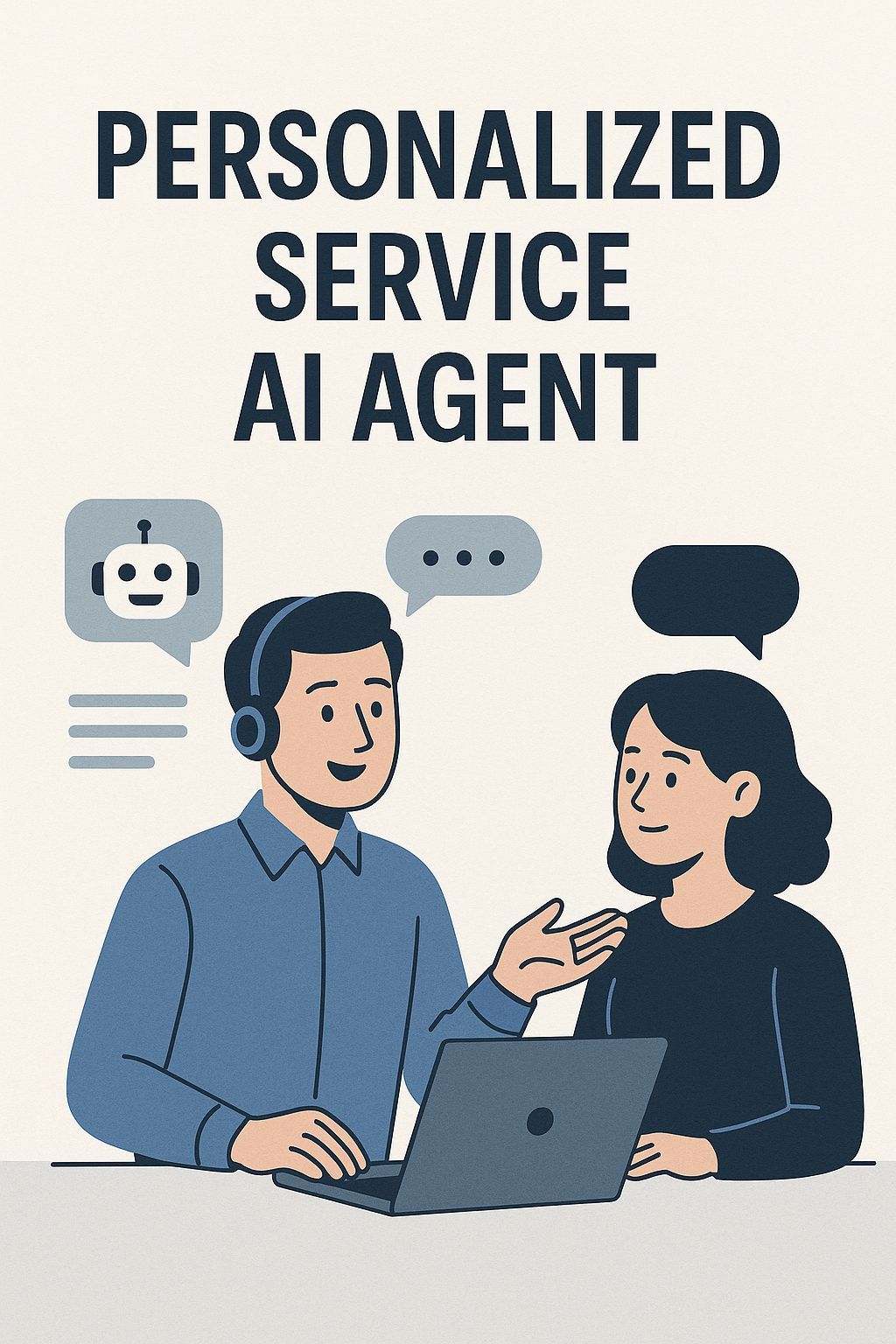

Orange County HVAC Google AI Overview Domination: 7 Proven Strategies to Capture Featured AI Results





